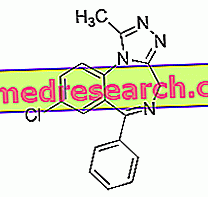
What is Darzalex - Daratumumab used for?
Darzalex is a cancer medicine used on its own for the treatment of adult patients with multiple myeloma (a cancer of the bone marrow). It is used if the disease has reappeared after treatment with anticancer medicines (including medicines known as proteosome inhibitors) and immunomodulatory drugs (which act on the immune system) or if the disease has not improved with these medicines.
Because the number of patients with multiple myeloma is low, the disease is considered 'rare' and Darzalex was designated an 'orphan medicine' (a medicine used in rare diseases) on 17 July 2013.
Darzalex contains the active substance daratumumab.
How is Darzalex - Daratumumab used?
Darzalex is available as a concentrate for solution for infusion (drip) into a vein. The recommended dose is 16 mg per kilogram of body weight given once a week for the first 8 weeks. From week 9 to week 24, Darzalex is given every 2 weeks and thereafter every 4 weeks. Therapy should be continued until the patient continues to derive therapeutic benefit from it. Before and after the infusion, the patient must take medicines to reduce the risk of infusion-related reactions. Your doctor may need to reduce the rate of infusion or stop treatment in case of severe infusion-related reactions.
Darzalex can only be obtained with a prescription and must be administered by a healthcare professional in a setting where resuscitation services are readily available for patients. For more information, see the summary of product characteristics (included with EPAR).
How does Darzalex - Daratumumab work?
The active substance in Darzalex, daratumumab, is a monoclonal antibody (a type of protein) designed to recognize and bind to the CD38 protein that is present in large quantities on multiple myeloma cells. By binding to the CD38 protein present on multiple myeloma cells, daratumumab stimulates the immune system to destroy cancer cells.
What benefit has Darzalex - Daratumumab shown during the studies?
Darzalex has been studied in two main studies involving a total of 196 patients with multiple myeloma who reappeared after or failed to respond to at least two previous treatments including a proteasome inhibitor and an immunomodulator. The main efficacy parameter was based on the percentage of patients who fully or partially responded to treatment (measured by the disappearance or reduction of at least 50% of an excess protein found in multiple myeloma cells). In one study, approximately 29% of the patients who took Darzalex at a dose of 16 mg / kg (31 of 106 patients) achieved a complete or partial response to the treatment while the percentage was 36% (15 of 42 patients) in the second study. In these studies Darzalex was not compared to other treatments.
What is the risk associated with Darzalex - Daratumumab?
The most common side effects of Darzalex (which may affect about 1 in 2 people) are infusion-related reactions such as breathing problems, coughing, stuffy or runny nose and chills. Other frequent side effects (affecting at least 1 in 5 patients) are tiredness, pyrexia (fever), nausea (feeling sick), back pain, upper respiratory tract infections (such as colds), anemia (low red blood cell count), neutropenia (low levels of neutrophils, a type of white blood cell) and thrombocytopenia (low blood platelet count). For the full list of restrictions and side effects reported with Darzalex, see the package leaflet.
Why has Darzalex - Daratumumab been approved?
Darzalex has been shown to be effective in treating multiple myeloma in patients who have progressed despite having received at least two previous treatments. These patients have limited treatment options and Darzalex, which acts differently than existing treatments, is an alternative. Darzalex's security profile is considered acceptable and manageable.
Although the studies had limitations, including the absence of a control group and a low number of patients, the Agency's Committee for Medicinal Products for Human Use (CHMP) decided that Darzalex's benefits are greater than its risks and recommended that it be approved for use in the EU.
Darzalex has obtained a "conditional approval". This means that further information on the medicine, which the company is required to provide, will be available in the future. Every year the European Medicines Agency will review the new information available and this summary will be updated accordingly.
What information is still awaited for Darzalex?
Since a conditional approval has been issued for Darzalex, the company that markets it will provide the results of two studies comparing the effect of Darzalex used in combination with other anticancer treatments (for example, lenalidomide and dexamethasone, or bortezomib and dexamethasone ) with that of these other monotherapy treatments.
What measures are being taken to ensure the safe and effective use of Darzalex - Daratumumab?
A risk management plan has been developed to ensure that Darzalex is used as safely as possible. Based on this plan, safety information has been included in the summary of product characteristics and the package leaflet for Darzalex, including the appropriate precautions to be followed by healthcare professionals and patients. In addition, the company that markets Darzalex will provide information material to all healthcare professionals who should use the medicine, to inform them that it can alter the result of a blood test (indirect Coombs test), indicated to determine suitability for blood transfusions . Patients who have been prescribed Darzalex will receive a medical alert card with similar information.
More information on Darzalex - Daratumumab
For the full EPAR of Darzalex, consult the website of the Agency: ema.europa.eu/Find medicine / Human medicines / European public assessment reports. For more information on Darzalex therapy, read the package leaflet (also part of the EPAR) or contact your doctor or pharmacist.
The summary of the opinion of the Committee for Orphan Medicinal Products related to Darzalex is available on the Agency's website: ema.europa.eu/Find medicine / Human medicines / Rare disease designation.



